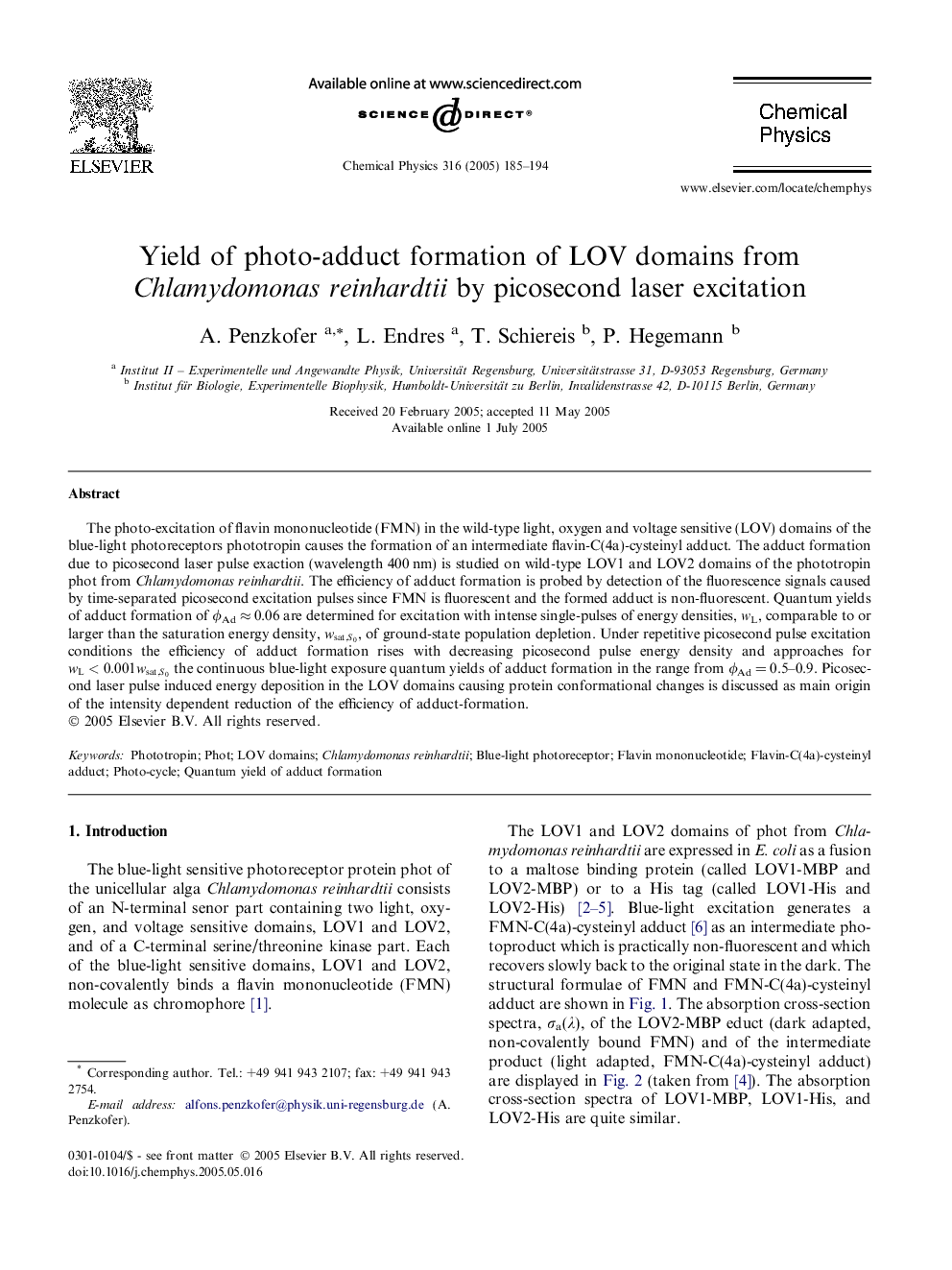| Article ID | Journal | Published Year | Pages | File Type |
|---|---|---|---|---|
| 9575385 | Chemical Physics | 2005 | 10 Pages |
Abstract
The photo-excitation of flavin mononucleotide (FMN) in the wild-type light, oxygen and voltage sensitive (LOV) domains of the blue-light photoreceptors phototropin causes the formation of an intermediate flavin-C(4a)-cysteinyl adduct. The adduct formation due to picosecond laser pulse exaction (wavelength 400 nm) is studied on wild-type LOV1 and LOV2 domains of the phototropin phot from Chlamydomonas reinhardtii. The efficiency of adduct formation is probed by detection of the fluorescence signals caused by time-separated picosecond excitation pulses since FMN is fluorescent and the formed adduct is non-fluorescent. Quantum yields of adduct formation of ÏAd â 0.06 are determined for excitation with intense single-pulses of energy densities, wL, comparable to or larger than the saturation energy density, wsat,S0, of ground-state population depletion. Under repetitive picosecond pulse excitation conditions the efficiency of adduct formation rises with decreasing picosecond pulse energy density and approaches for wL<0.001wsat,S0 the continuous blue-light exposure quantum yields of adduct formation in the range from ÏAd = 0.5-0.9. Picosecond laser pulse induced energy deposition in the LOV domains causing protein conformational changes is discussed as main origin of the intensity dependent reduction of the efficiency of adduct-formation.
Keywords
Related Topics
Physical Sciences and Engineering
Chemistry
Physical and Theoretical Chemistry
Authors
A. Penzkofer, L. Endres, T. Schiereis, P. Hegemann,
